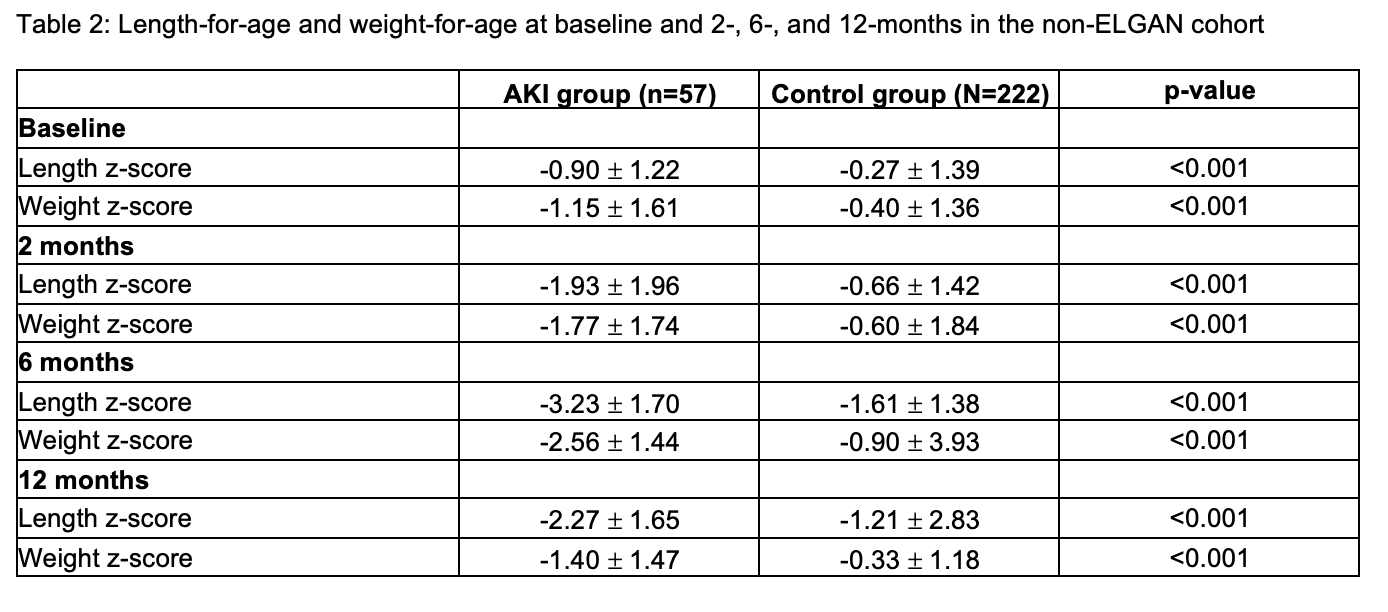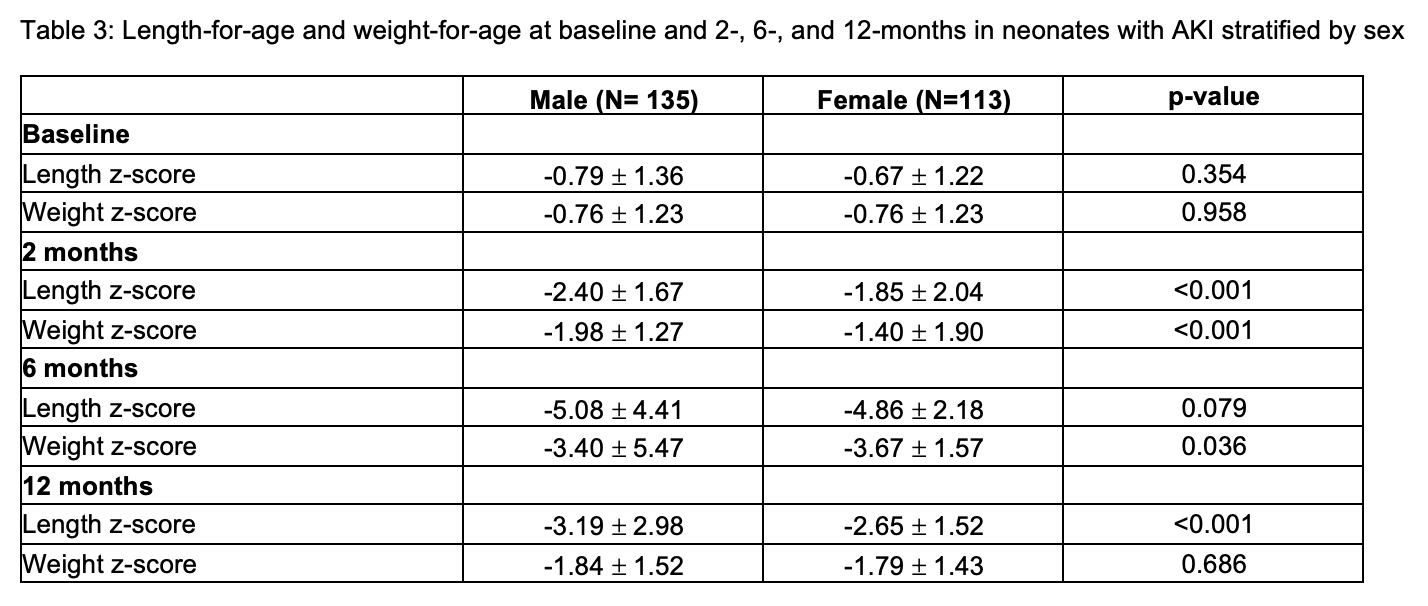Neonatology
Session: Neonatal Nephrology/AKI 1
33 - Acute kidney injury is associated with early poor growth in preterm neonates
Sunday, May 5, 2024
3:30 PM - 6:00 PM ET
Poster Number: 33
Publication Number: 33.2031
Publication Number: 33.2031

Mital Patel, MD (she/her/hers)
Assistant Professor
Wake Forest Baptist Health - Brenner Children's Hospital
Winston-Salem, North Carolina, United States
Presenting Author(s)
Background: Acute kidney injury (AKI) is associated with many short-term adverse outcomes including perturbation of mineral metabolism. No studies have assessed the impact of AKI on physical growth outcomes in children born prematurely.
Objective: The objective of the present study is to explore the association between AKI and physical growth outcomes in the first year of life in premature neonates.
Design/Methods: This study was an observational cohort study of all preterm neonates born 50 weeks corrected gestational age. Difference in mean length-for-age and weight-for-age z-scores were compared at each time point in the cohort with AKI versus control group.
Results: 496 neonates were included in our study; 217 (43.8%) were ELGAN and 279 (56.3%) were not. Within the ELGAN group, 191 (88.0%) had AKI compared to 57 (20.4%) in the non-ELGAN group. ELGAN infants with AKI were not different in length-for-age but did have higher weight-for-age z-scores at baseline compared to those without AKI. They had lower length-for-age z-scores at 2, 6, and 12 months and lower weight-for-age z-scores at 2 and 6 months (Table 1). Non-ELGAN infants with AKI had lower length-for-age and weight-for-age z-scores at baseline, 2, 6, and 12 months (Table 2). Male and female neonates with AKI had no difference in baseline length- or weight-for age z-scores. Male infants with AKI had lower length-for-age z-scores at 2 and 12 months and lower weight-for-age z-scores at 2 months (Table 3).
Conclusion(s): At our tertiary care pediatric center, premature neonates who were affected by AKI have poorer physical growth outcomes in the first year compared to those without AKI regardless of ELGAN status. Male infants appear to be more affected than female infants. Further investigations are needed to understand if AKI remains an independent risk factor for poor physical growth once other risk factors, including degree of prematurity, illness severity, and nutrition are considered. Long term implications of AKI associated poor growth, including neurocognitive outcomes, should also be investigated.
.png)


